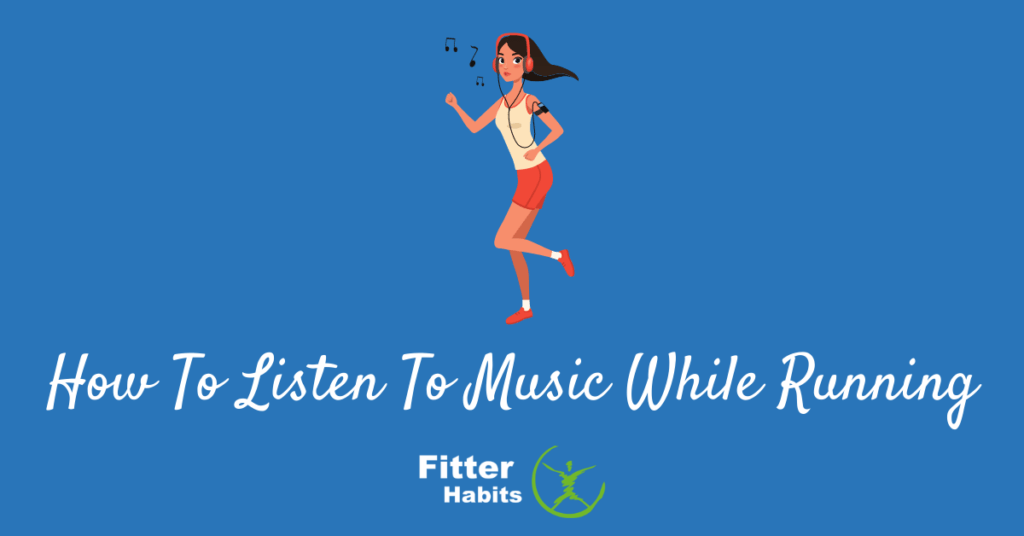Multiple studies show that listening to music while running can improve your performance. Learn how to listen to music while running so that you can increase the fun factor in your running.
Music is a powerful thing. It has the ability to evoke deep emotions, uplift people, and motivate them. It is because of music’s ability to change our emotions and energy levels that so many joggers listen to their favorite tunes while running. In this article, we provide a few tips on how to listen to music when running.
Contents
How to Listen to Music When Running

The development of innovative technologies has provided runners with comfortable and practical ways to listen to music while they’re working up a sweat. Here are some guidelines regarding the headphones and devices that you can use.
What Are the Best Headphones for Running?
To avoid having to deal with troublesome chords while jogging, you can opt for Bluetooth headphones that connect wirelessly to your device such as Apple AirPods or Falwedi IPX8 Wireless Earbuds. If you’re scared that they may fall out of your ears while jogging, there are nifty earbuds on the market that loop behind your ear, such as Runattitude Sports Bluetooth headphones or Letsfit Bluetooth headphones.
To prevent the dangers that are associated with blocking out all sound when you’re jogging in urban areas, it may be wise to invest in headphones that allow ambient noise. This way, you get to listen to your favorite tunes, while also remaining conscious of the sounds of everyday life around you. Apple’s Airpods Pro headphones, for instance, have a transparency mode.
Which Devices Can I Use To Listen To Music While Running?
There are various devices you can play your music from. These include:
- Smartphones: Smartphones provide good quality sound, and you can load various applications to download music and create playlists, such as Apple iTunes or Spotify. You can store your phone in a running backpack or attach it to a running armband while running.
- MP3 players: MP3 players are super light and often contain a clip so that you can attach the player to your shorts or shirt. Many of them come with Bluetooth, which enables you to connect wireless headphones to the device. Sony’s Sport wearable MP3 player is a one-piece MP3 player. Since the player is built into the earphones, you don’t have to carry a separate device around. The MP3 player comes with a remote that you can wear on your finger, so you don’t need to fiddle with your earphones while running.
- Smartwatches: Probably the most convenient solution is to listen to your music from a smartwatch, since it’s smaller and lighter and already secured to your body. Apple Watch, for instance, provides access to your iTunes library by syncing with your Apple devices.
How To Choose a Playlist

Since music is a subjective thing, there are no “right” or “wrong” playlists for running. You want to select music that you like and that makes you feel happy and energized. This, of course, means that you should rather exclude the song you played on repeat ad nauseam when your first love left you heartbroken.
There are, however, a few general rules you can consider when putting a playlist together. Factors to think about include the tempo of the music and the order of the tracks. Several studies have suggested that the tempo of a song, measured in beats per minute (BPM), definitely affects a runner’s performance.
This is because one’s natural inclination is to adapt one’s strides to the beat of the music. You, therefore, want to select music that has a tempo that will help you maintain your ideal pace.
When you’re deciding on the order of the tracks, you can select two to three slower songs for the beginning of your playlist for when you’re warming up. According to experts, you want to select songs with around 80 to 90 BPM for this section of the playlist. To give you an idea of how fast such as song may be, Wonderwall by Oasis has 88 BPM and Royal by Lorde has 85 BPM.
You can then select a list of songs that have between 120 and 140 BPM for when you up your pace. Choose a beat to which you can maintain a comfortable pace and ensure that you select enough songs to cover the period of time you plan to jog. It’s cumbersome to have to access your device and change songs while you’re running.
For the last bit of your playlist, you can add slower songs that are well-suited to cooling down and doing some stretching exercises.
Final Word on How to Listen to Music While Running
Listening to music while running can have a positive effect on your running performance and can also heighten the fun factor of your weekly jogging excursions. All you need is a good pair of earphones, a device, and a killer playlist to run like a rock star.
FAQs About How to Listen to Music While Running
What are the benefits of listening to music while running?
There are many benefits to listening to music when running, such as:
1. Music releases dopamine in the brain. Dopamine is called the feel-good hormone because it plays an important part in the brain’s reward system and is associated with pleasurable sensations. When you feel good, you’re bound to exercise with more focus and vitality.
2. Listening to music keeps things interesting. Jogging can sometimes become a bit tedious, especially the case if you’re busy with an extra-long run. Putting on your headphones and listening to music will put you in another “zone” where your mind can focus on something other than what the body is doing.
3. Music can improve performance. Studies also show that listening to music can lower runners’ perception of effort and exertion. Music has a dissociative effect that causes joggers to feel less fatigue, discomfort, and pain when they’re exercising.
Are There Any Cons to Listening To Music While Running?
The only things that you need to consider when listening to music while running is to protect your ears by not turning the volume up too much and remain cognizant of your surroundings. Blocking out all sound can be dangerous when you’re running through busy cityscapes, so it’s best to invest in earphones that allow for ambient noise.



